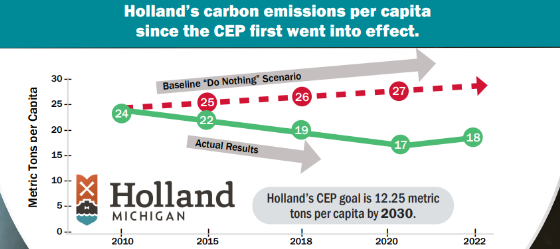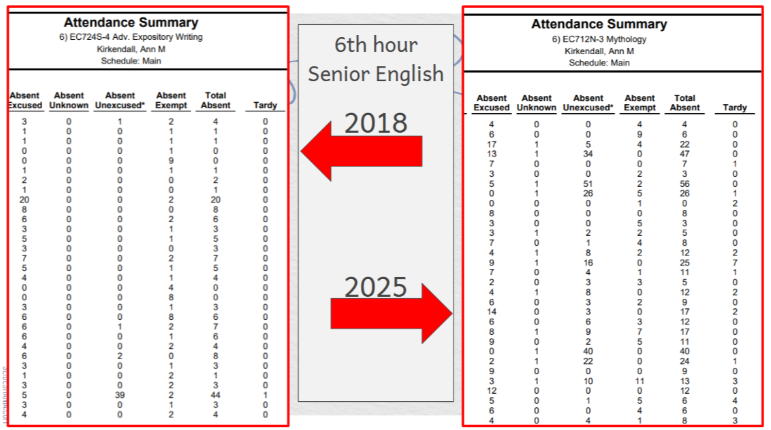Organizations from NASA to the UN warn of catastrophic ecological and environmental collapse, from increased food and housing prices to increased extreme weather events. The spotlight is often on national and international sustainability efforts: the Paris Climate Accords, Tesla’s electric vehicles, or the work of the EPA. Sustainability efforts, however, are made of thousands of initiatives, from the global and broad to the local and narrow. Sustainability efforts in Holland are many and, when compared to the past, they are considerable.
A major concern for any government seeking to “be sustainable” is how energy is produced. Here, this is controlled and distributed by the Holland Board of Public Works. Their standard package offers 15% renewable energy, from sources such as wind, landfill gas, or sunlight. However, consumers can increase their renewable energy consumption to 50% or even 100%, with their 100% renewable energy package costing the average consumer about $7.73 more per month, using the US Energy Information Administration’s estimates for how much energy most people use a month. This is far cheaper than other solutions, like installing solar panels, and it is arguably more effective as well.
Though increased costs for renewable energy do serve as a kind of disincentive, the On-Bill program does offer incentives for more efficient energy usage. It provides low-interest loans to those who seek to increase the safety and efficiency of their home. Measures that qualify range from improving insulation and water heating to installing solar panels, and though the former measure may sound minor, energy inefficiency of Holland’s buildings is a significant hindrance on efforts to become “greener.”
Encouraging individual units of insulation is not the only way the city of Holland has made an effort at sustainable development, though a significant amount of sustainability efforts have targeted energy usage rather than production. The City of Holland Sustainability Initiative Energy Conservation and Efficiency Plan for City Facilities and Operations recommended a number of creative solutions to the problem of energy-overuse: codify legislation to eliminate the idling of city vehicles for long periods of time, switching incandescent traffic lights to LED’s, monitoring the soil to only use city sprinklers when it is necessary (though more directly tied to resource conservation, it is significant nonetheless), and other measures.
One of the most ambitious plans in the city of Holland, the Community Energy Plan. This plan seeks to reduce the role of gas in Holland, find sustainable energy sources, make homes 50% more efficient, and reduce the amount of total energy used incrementally. It seems to be the backbone of Holland’s sustainability effort, and it still has a dedicated maintenance team to ensure it meets (and also exceeds) its targets.
None of the above is meant to imply that the efforts stop at trying to increase efficiency, there are, in fact, real ambitions for sustainable energy production and sourcing. Coal has a declining presence in the city, with the James DeYoung Coal Plant being replaced by the Holland Energy Park only a few years ago. The Energy Park relies on natural gas, a “dirty” fuel but one that still outshines coal in most major respects. The Energy Park also uses a combined energy cycle gas turbine, which uses the excess heat generated from the natural gas energy production to fuel the production of even more energy. It also helps heat city sidewalks. The Community Energy Services Manager at the BPW, Andrew Reynolds said that the Energy Park “replaced” the DeYoung Plant in terms of energy generation, “and then some.”

Other specific trends in power generation are also positive. The J.H. Campbell Coal Power Plant is to be closed by 2025, and the Palisades Nuclear Plant, which supplied some Holland Energy, is expected to have their operations restarted in spite of a temporary closing. Of Palisades, Reynolds said, “losing it means in most cases being replaced by something that’s not entirely carbon free.”
Overall, then, the City of Holland certainly seems to be moving in a satisfactory direction. Per capita emissions in the city fell from 24 metric tons a year in 2010 to 18 metric tons in 2022. Similarly, Holland electricity contains 50% fewer pounds of CO2 per kilowatt hour than it did in 2005. The city is clearly making progress and, thanks to people like Andrew Reynolds, we can ensure that our future is bright.







